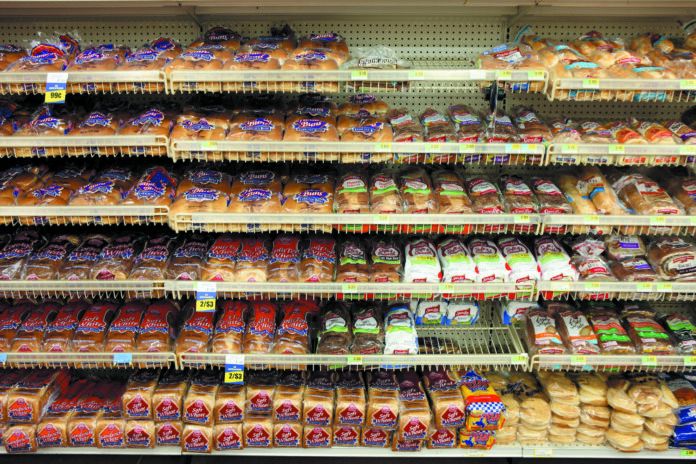Eating more minimally processed whole grains and less refined grains is good for your health. But how do you know which grain products are the best choice? Big, front-of-package words like wheat and multigrain can be misleading, the color is not a good indicator, and other ingredients contained in the item can torpedo an otherwise healthy choice. You may need to turn the package over to choose the best options.
Whole Grains and Health. Whole grains are naturally rich in fiber and a good source of the B vitamins niacin and thiamin, as well as the minerals iron, selenium, potassium, and magnesium. Diets high in whole grains are associated with lower risk of heart disease, diabetes, and certain cancers. Additionally, the fiber in whole grains supports a healthy gut microbiome. The Dietary Guidelines for Americans recommend at least half of all the grains you eat be whole grain. Few people in the U.S. meet this goal.
Refined wheat, rice, and corn are often enriched with vitamins and minerals to replace those lost in the refining process. To comply with federal guidelines, they are also fortified with folic acid and iron. But refined grains lack the fiber and other trace nutrients in whole grains and are rapidly digested. This can lead to higher blood sugar spikes. Refined grains also lack adequate fiber to promote healthy bacteria in your large intestine.
- Grain Claims. Knowing the true definitions of front-of-package claims on grain products like bread and crackers can help you make the best decisions.
- White: A refined grain (like white rice) or refined grain product (as in “white bread”).
- Wheat: A product made with wheat flour—refined. Keep in mind that “wheat bread,” for example, is not the same as “whole wheat bread.”
- Multigrain: This means the product is made from multiple grains—all of which could be refined. For example, a product made from refined wheat and refined rice flours can market itself as “multigrain,” but has no whole grains.
- Whole Wheat, Whole Grain, Whole Wheat Flour: More than 50 percent of the product is whole grain. May contain actual whole grains or all the individual components of the grain (bran, germ, endosperm), although these components can still be highly processed.
- White Whole Wheat: “White wheat” is a variety naturally missing the genes that give the bran its dark color and slightly bitter flavor. Although it is easily confused with white flour, “white whole wheat” flour is whole grain. Some people prefer white whole wheat breads and pastas because the flavor is milder than regular whole wheat.
Subtraction by Addition. While naturally fiber- and nutrient-rich whole grains and products are better choices than quickly digested, blood-sugar-spiking refined grain products, they are not all created equal. When choosing from intact whole grains (like oats, wheat berries, barley, buckwheat, oats, and amaranth), any choice is an excellent choice. It’s the processed foods you need to watch out for. Whole grain breakfast cereals with lots of added sugar and heavily salted whole wheat crackers are less good choices than minimally processed whole grains, although still better choices than products made entirely from refined grains.
The simple tips in our “Take Charge!” box can help you make the best grain-food choices for your long-term health.
Branch out. There are many delicious, nutritious, intact whole grains available in markets today. Try something new such as amaranth or sorghum! All grains can be cooked the same way you cook rice, although whole grain cooking times tend to be about double.
Make half your grains whole. You don’t have to eat whole grain products all the time but try to make at least half of the grain foods you eat whole grain foods.
Don’t trust front-of-package claims. “Multigrain” is often marketing code for multiple refined grains. “Wheat” usually means refined flour (unless it says “whole wheat”). The ingredient list should have a whole grain as the first ingredient.
Don’t trust the color. Molasses or caramel coloring may be added to darken bread that does not contain whole grains. White whole wheat, on the other hand, is not dark. Look beyond the whole grain labels. Don’t assume all whole-grain products are good choices. Look for sodium content that is less than five percent of the daily value (DV) per serving; look for cereal and other grain products with the least possible sugar per serving; and see if the product has at least one gram of fiber for every 10 grams of carbohydrate listed on the Nutrition Facts label.
























